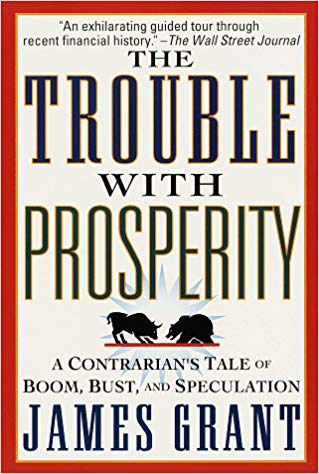Description
In The Trouble with Prosperity, James Grant tells why the financial good times of the 1990s are destined to collapse. To understand the current bull market, he argues, we must examine a seventy-year cycle of boom and bust. Through the tale of a single building – 40 Wall Street – and other stories, Grant gives us a way of understanding the rise and fall of great fortunes, the vicissitudes of investment strategies, and the colorful personalities who battled for fiscal survival and supremacy from 1929 – the year of foundation for 40 Wall Street was laid down – to the bull market of the 1990s, when real-estate mogul Donald Trump bought it.Grant insists that the hidden source of the strength of the Dow is heresy – ideas that were deemed financially sinful only a generation ago and have now been embraced with a millennial fervor.
Alas, what goes up must come down. This is a book about cycles of optimism and pessimism, of bull markets and bear markets, and of orthodoxy and apostasy, which, as Grant writes, are as old as the capital markets themselves.Grant’s underlying theme is counterintuitive, even perverse. Success is universally praised, failure disparaged, but Grant seeks to understand the neglected virtues of failure. As he puts it, “Booms do not merely precede busts. In some important sense, they cause them.” How and why that is so is the question he seeks to answer. Because people in markets make mistakes, he observes, tearing down is an indispensable part of the process of building up. The errors of the up cycle must be sorted out, reorganized, or auctioned off. Any social system can cope with success, but the genius of capitalism, he insights, is that it also excels at failure. And failure, he concludes, is at the least instructive, provided we are willing to draw its lessons. Moreover, it lays the foundation for later success. But too often we suppress its symptoms; we do so, Grant warns, at our peril.





